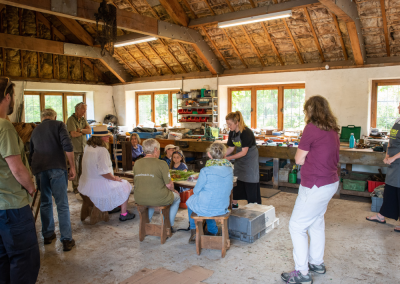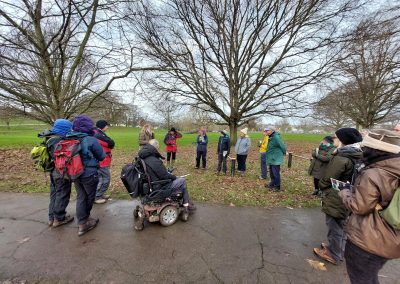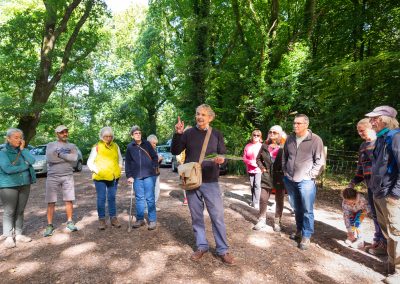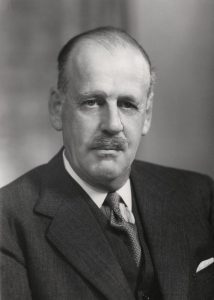In 2023, the East Devon National Landscape protection remains as vital as ever, playing a crucial role in environmental conservation, biodiversity recovery, cultural heritage preservation, community well-being, economic sustainability, education, and climate resilience.
For many of you, the East Devon National Landscape holds a special place in your hearts – a place where our stories and love of nature meet. Join us in celebrating our 60th anniversary, as we continue to cherish and protect this remarkable region.
As we celebrate our 60th anniversary, we reflect on our role as Landscape Guardians

Since our designation in 1963, the National Landscape has been dedicated to the safeguarding of East Devon's special landscapes and rich biodiversity.
In this time – and every time – it’s clear that protecting East Devon’s natural treasures is a task beyond any one organisation.
Our collaboration with our partnership organisations, conservation groups, local authorities, and passionate individuals has been fundamental to our achievements.
At the heart of our work lies a commitment to sustainability

Our commitment to sustainability is supported by our East Devon National Landscape Communities Project Fund, which helps us facilitate initiatives that benefit both our environment and the people who call this beautiful area their home.
Our National Landscape comes to life thanks to our local communities. Through educational programs, volunteer efforts, and community events, we’ve built strong connections that reach beyond our stunning landscape.
These communities are integral to our protected landscape and play a crucial role in our conservation efforts. Their dedication to nature is not only admirable but also essential for the overall future well-being of the National Landscape.
We want to see our communities thrive.


Connecting to
something special
This year our nature-connection events have been igniting a passion for the great outdoors and celebrating our 60th anniversary, while supporting our Saving Special Species nature recovery work.
From bat detecting walks to stream-dipping adventures, butterfly hunts to springtime strolls, these events foster a deep connection with nature.
This year our nature-connection events have been igniting a passion for the great outdoors and celebrating our 60th anniversary, while supporting our Saving Special Species nature recovery work.
From bat detecting walks to stream-dipping adventures, butterfly hunts to springtime strolls these events, run by East Devon National Landscape Engagement Officer, Ruth Worsley, helped foster a deep connection with nature.
The experiences we share remind us all of the irreplaceable beauty of our natural world and strengthen our commitment to its preservation.
Creative nature
connections
Printmakers Emma Molony, Rosie Stiling and Simon Ripley from Double Elephant worked with writer Sarah Acton to run workshops using Sound Maps and the Green Man as inspiration for their artwork.
Artwork was created by 400 children across 16 workshops* held at Beer, Branscombe, Exeter Road, Farway and Littleham Primary schools and Sidmouth College. Children drew shapes of the sounds they heard outside and imagined fantastical creatures of nature
FROM THEN to NOW

'From then to Now' was a heritage exhibition held this summer at Kennaway House, commemorating 60 years of the East Devon National Landscape.
The exhibition featured a remarkable collection of images and films generously contributed by East Devon Heritage Centres, History Societies, and Museums.
Displays highlighted the rich tapestry of history and stories unique to the villages and parishes within the East Devon National Landscape, offering visitors a captivating journey through time and the region’s landscape.
A Designation History
Christopher Addison
(1869 –1951)
National Parks - The Beginnings
- 1929: The first consideration for National Parks and similar areas in England and Wales begins when when Prime Minister Ramsay MacDonald establishes the National Park Committee, chaired by Christopher Addison MP, MD
1930s: Challenges & Proposals
- 1931: The ‘Addison Committee’ proposes a “National Authority” for park selection and policy, but economic concerns take precedence.
- 1932: Mass trespasses on Kinder Scout in the Peak District highlight the need to protect open spaces and countryside access.
- 1935: The Ramblers Association forms by merging local clubs nationwide.
- 1936: A voluntary ‘Standing Committee on National Parks’ (SCNP) forms, including Ramblers Association members.
- 1938: SCNP publishes ‘The Case for National Parks in Great Britain,’ advocating their creation.
John Gordon Dower
(1900 – 1947)
1940s: Wartime and Progress
- 1942: The Wartime Coalition Government, chaired by Lord Justice Scott, embraces SCNP’s National Parks campaign in the post-war vision for a ‘Better Britain’, requesting an official report by John Dower.
- May-45: The ‘Dower Report’ designates East Devon as a ‘Division C’ conservation area, leading to the ‘Blackdown Hills Amenity Area.’
- Jul-45: New Labour Government forms the National Parks Committee (England and Wales), chaired by Sir Arthur Hobhouse.
- 1949: The National Parks Commission (NPC) emerges under the National Parks and Access to the Countryside Act 1949
1950s: National Landscape Considerations
- 1953: Sir Patrick Duff’s paper mentions Sidmouth Bay and East Devon as National Landscape candidates.
- 1954: NPC explores the National Landscape program, formally addressing Devon’s coastline.
- Jan-56: NPC meets Devon County Council’s Director of Planning, Geoffrey Clark, on Devon National Landscape proposals.
- June 1956: Brigadier Acland persuades NPC to consider East Devon as an National Landscape alongside North and South Devon, initiating East Devon’s National Landscape designation efforts.
- 24-Jul-56: “Brigadier Acland’s report (B/G/227), discussed by NPC’s Committee B on 24 July 1956, highlighted East Devon’s scenic value.”
1960s: National Landscape Designation
- 1960: Proposed East Devon National Landscape boundaries are discussed.
- 1962: One-inch scale maps for East Devon National Landscape are prepared for public display.
- 1963: East Devon National Landscape Designation Order is confirmed in September, concluding a seven-year process.
© Beer Village Heritage Beer: Hooken Cliffs
1980s: Coastal Landscape Value
- 1984: East Devon Heritage Coast is established.
- Heritage Coasts were one of the most high profile and influential programmes operated by the Countryside Commission.
Late 1990s:
- The success of the Heritage Coast project encourages the establishment of an East Devon National Landscape-wide management service.
2000s - Present: CROW Act & National Landscape Team
- 2000: Countryside and Rights of Way Act (CROW) 2000 strengthens National Landscape management.
- 2002: National Landscape Partnership forms, with a core team for management.
- 2004: First National Landscape Management Plan (Strategy) adopted by County Council and District Council.
- 2004 – 2019: East Devon National Landscape Partnership has various chairpersons, including Margaret Rogers, Mike Ellingham, Donald Campbell, John Wilding, Graham Godbeer.
- 2019 – Present: Alistair Handyside OBE chairs the National Landscape Partnership.

More to Explore
Our National Landscape Projects
We lead, partner and support projects that focus on a wide range of themes, including landscape and heritage, environmental quality and climate, biodiversity, recreation and tourism.
Outdoors & Active
Whether you prefer walking, cycling, running or playing, everyone feels happier and healthier when they spend time in nature being more active.

East Devon Way
Discover the hidden gems of East Devon and explore this much loved walking route that links 40 miles of public footpaths, trails and bridleways.


















































